demolition on a group of neighboring 19th century houses on evergreen street has finally begun
This entry was posted on September 7 2016 by Eric
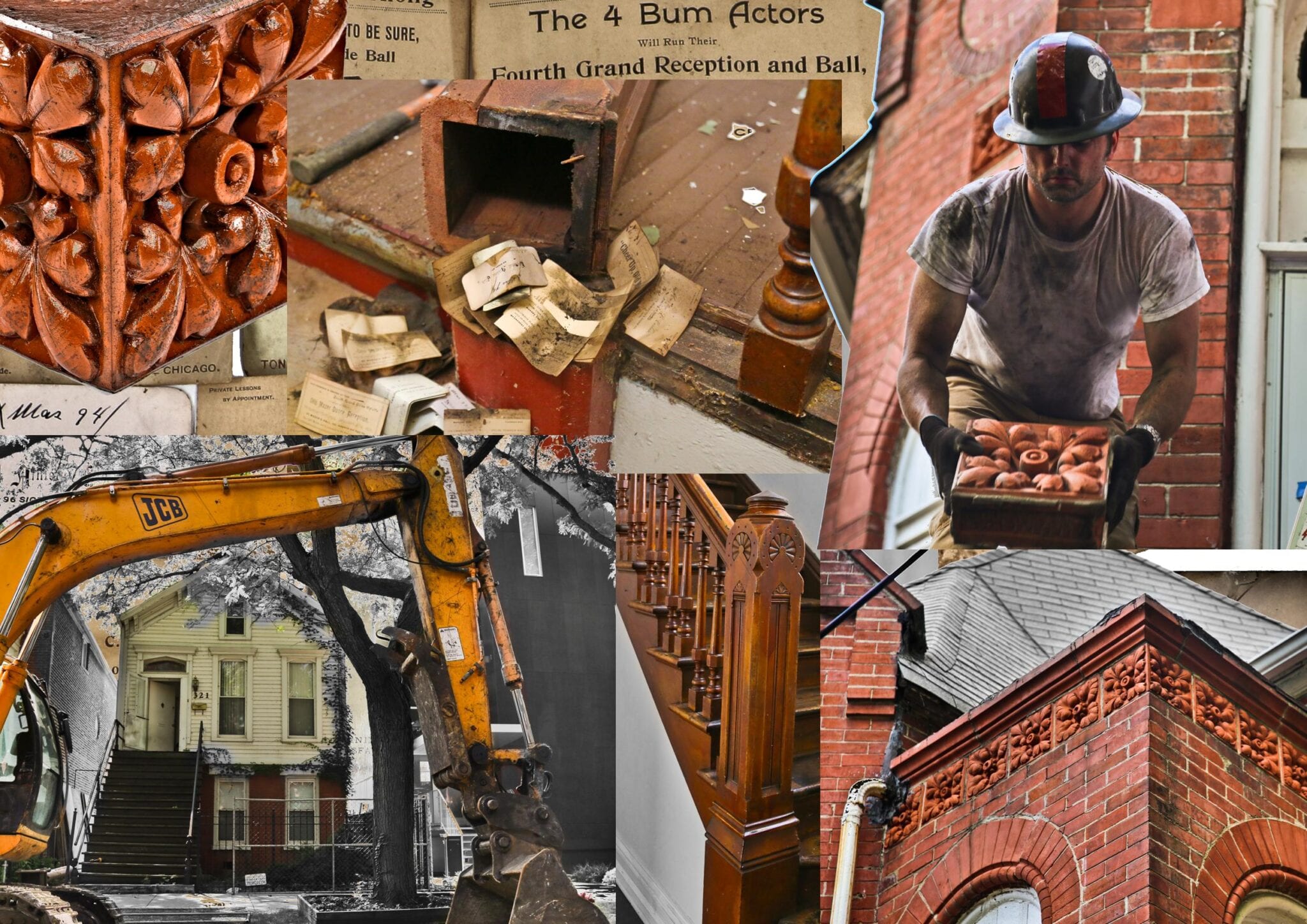
i never made it to work on friday. instead, i drove over to evergreen street after seeing demolition permits reissued, and hearing from an associate that the bright yellow wrecking machine is parked in front of the four endangered structures there. catching wind of this caused my heart to skip a beat and i knew i had to push aside all plans for the day to be able to dig in, document and salvage the buildings still resting on these two lots.
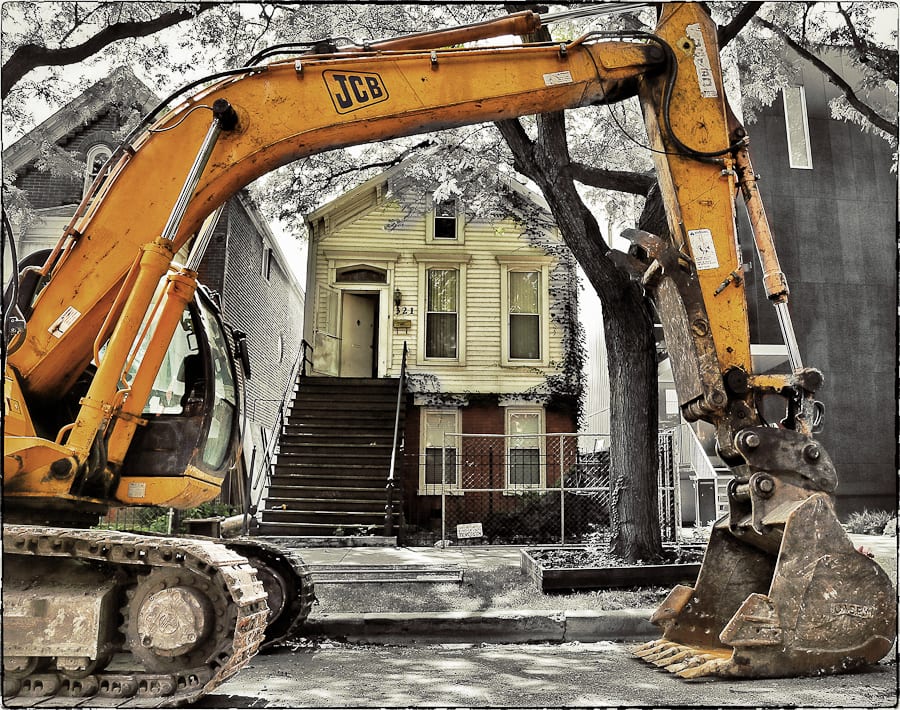
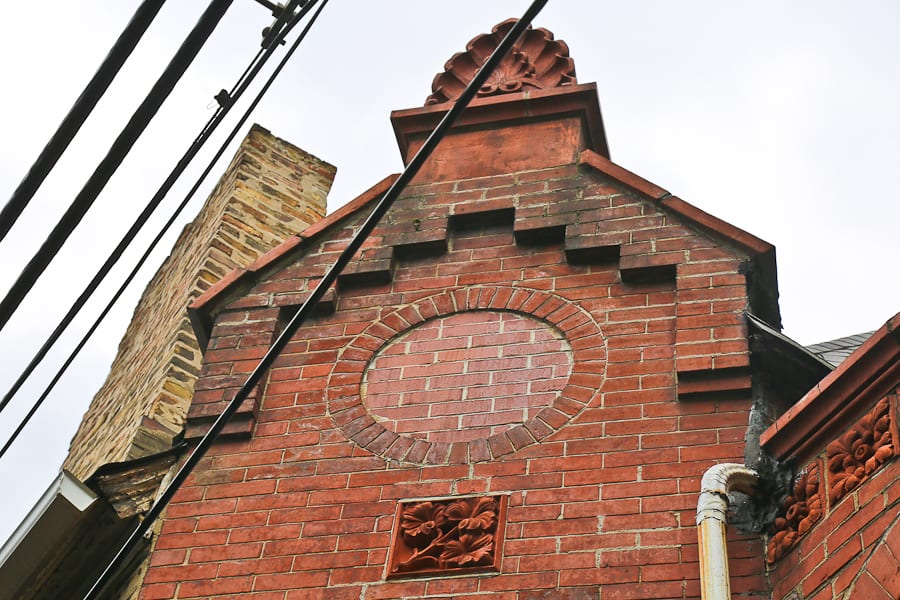
i spent at least two hours photographing the interiors and exteriors of the four structures before anything was removed, as that is one of the most important launching points for the narrative of a building's death. from then on i extract the ornament while continuing to carefully document each phase, whether it be removal of a staircase newel post or terra cotta ornament from the roofline. i carefully observe the "reverse engineering" process of demolition, as the building being slowly dismantled allows a glimpse of the materials, process, and original method of construction.
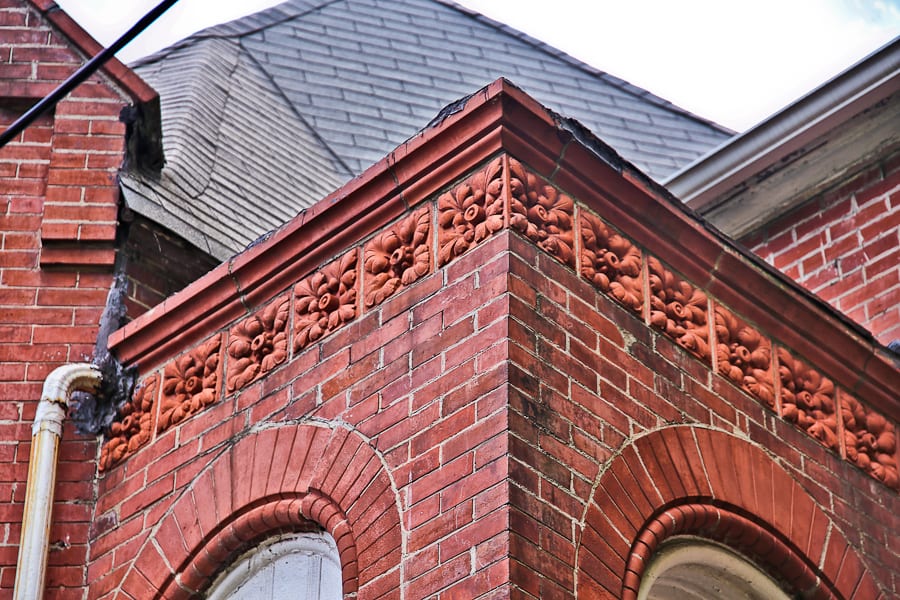
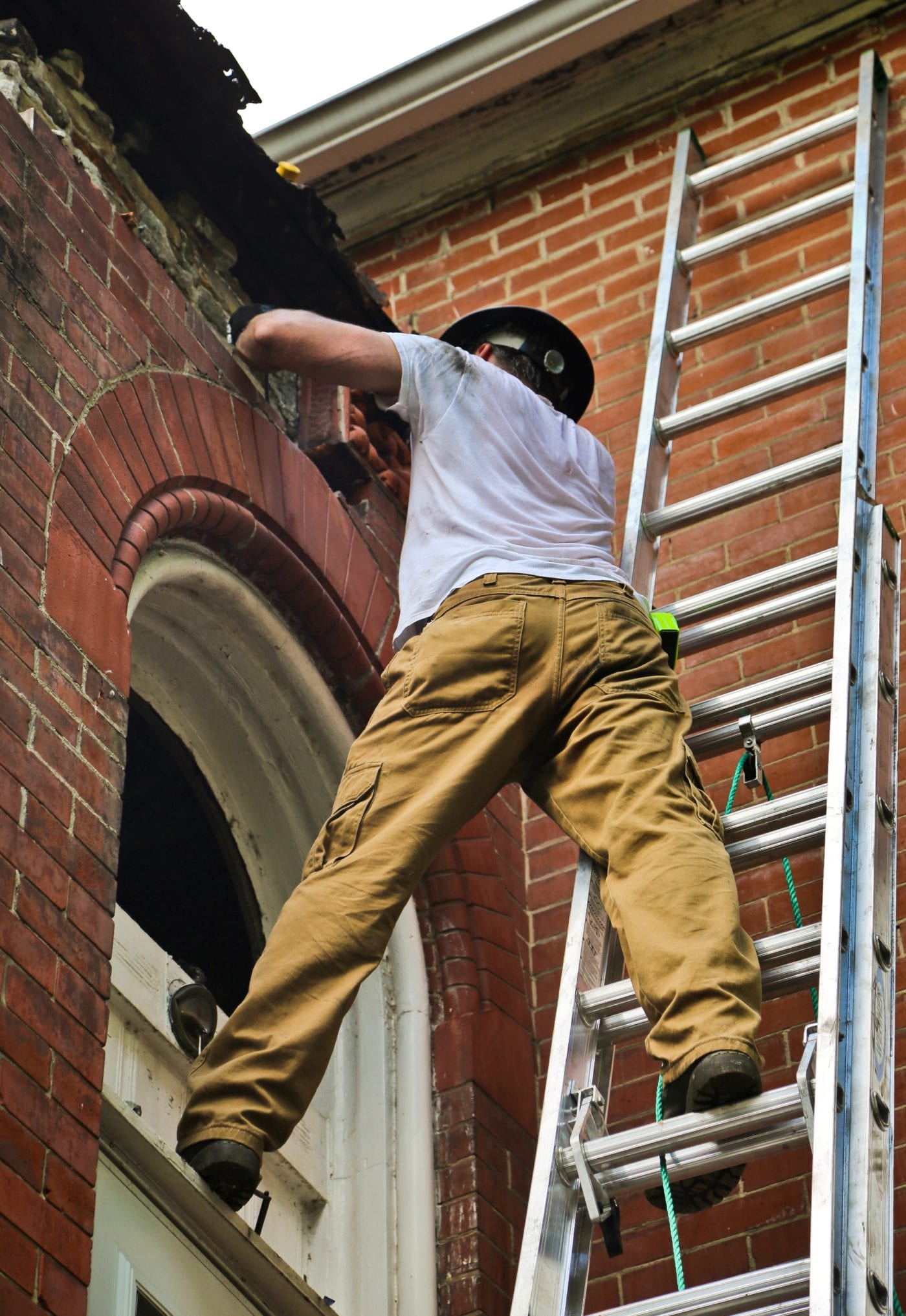
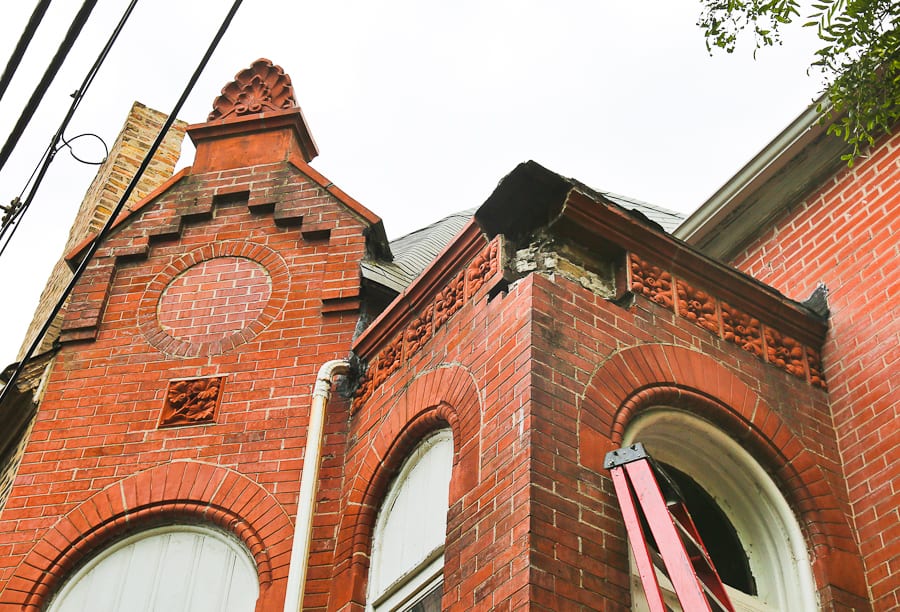
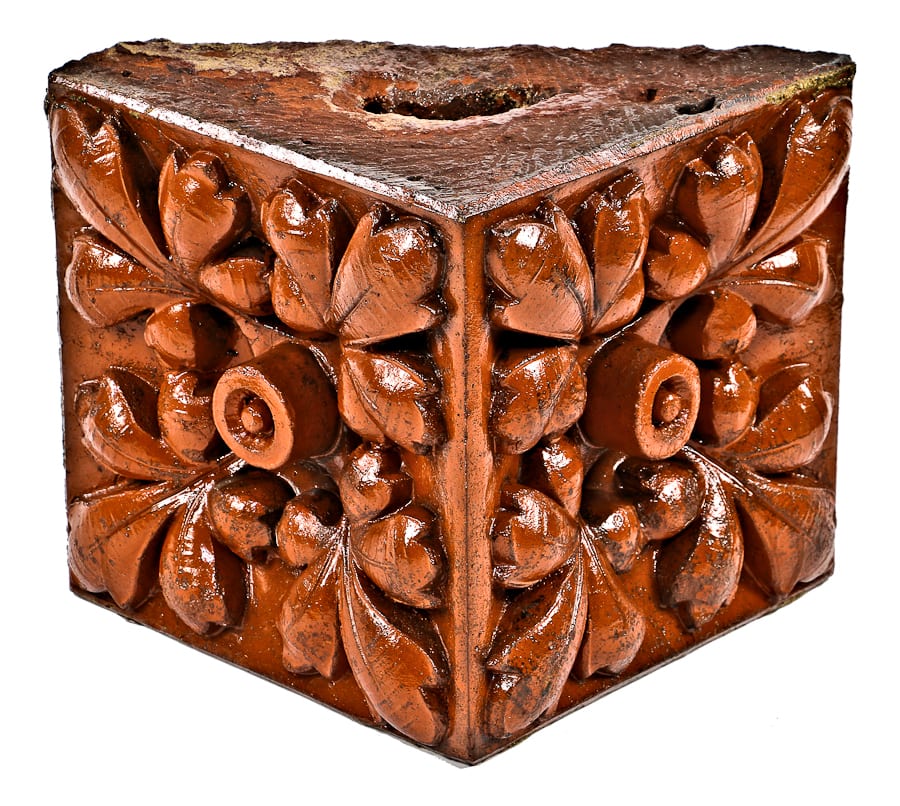
essentially, from the moment i step foot on the property to the moment the last wall is brought down, the camera is in hand, capturing the moments or movements that will contribute to the structure's narrative. the whole approach is rather simple and straightforward in theory, but complicated in practice - involving great time commitments and prior knowledge of what to look for and photograph (in order to place emphasis on important findings).
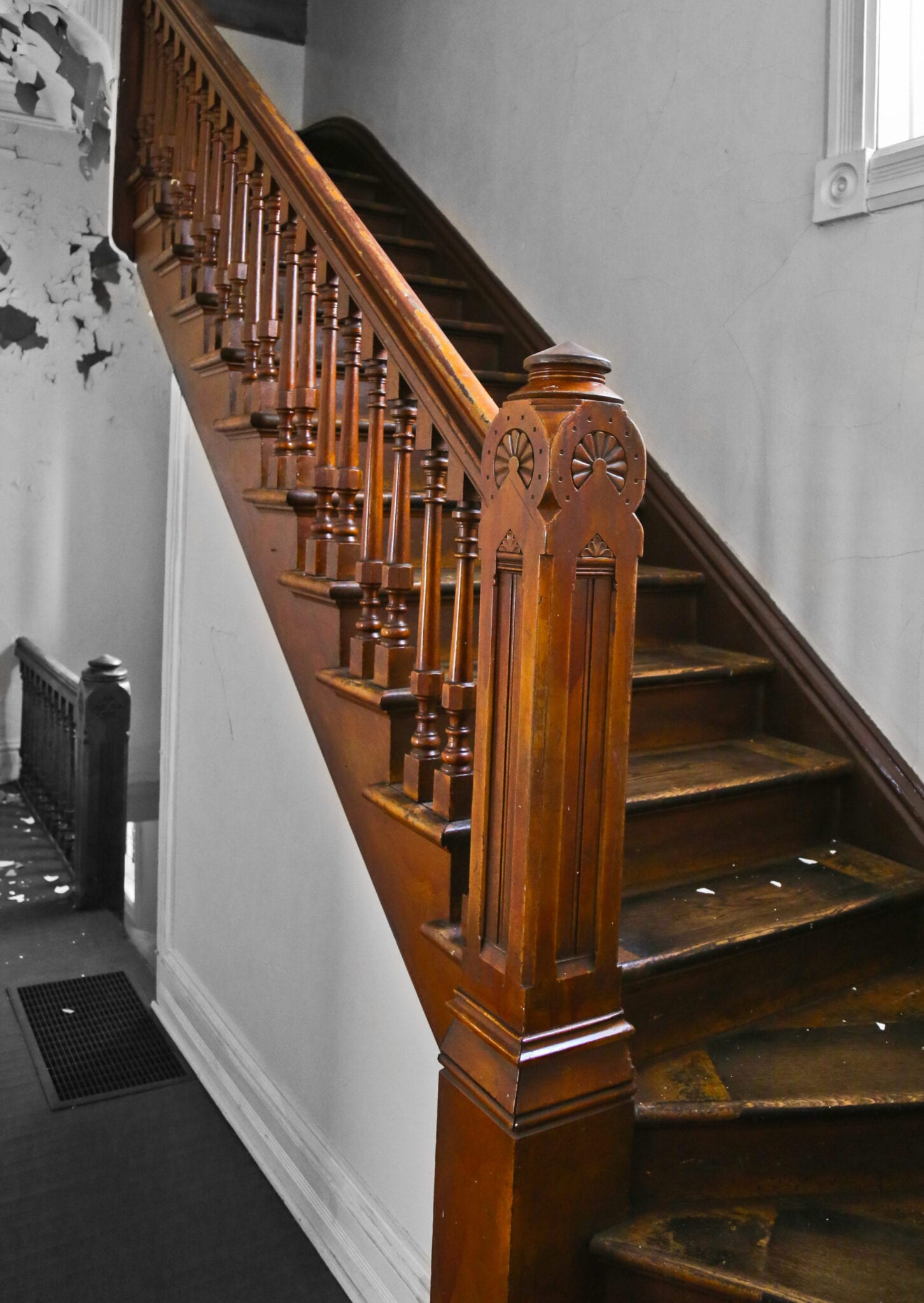
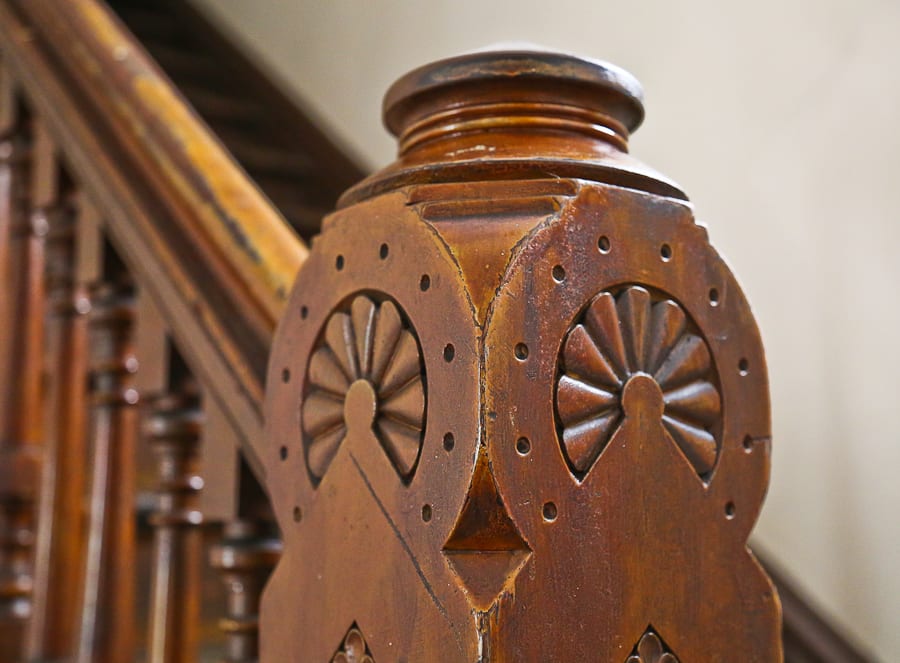
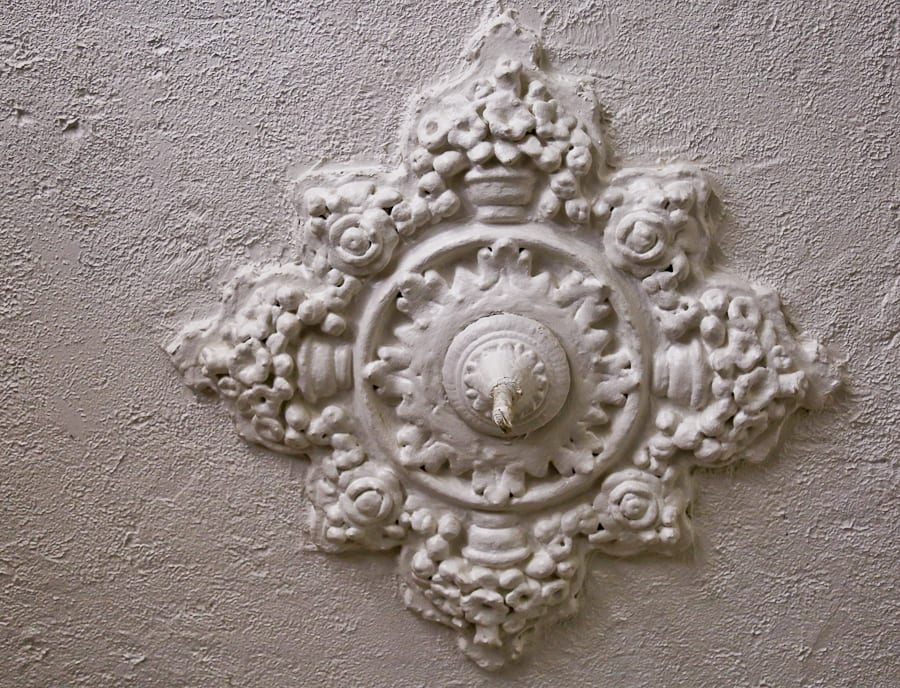
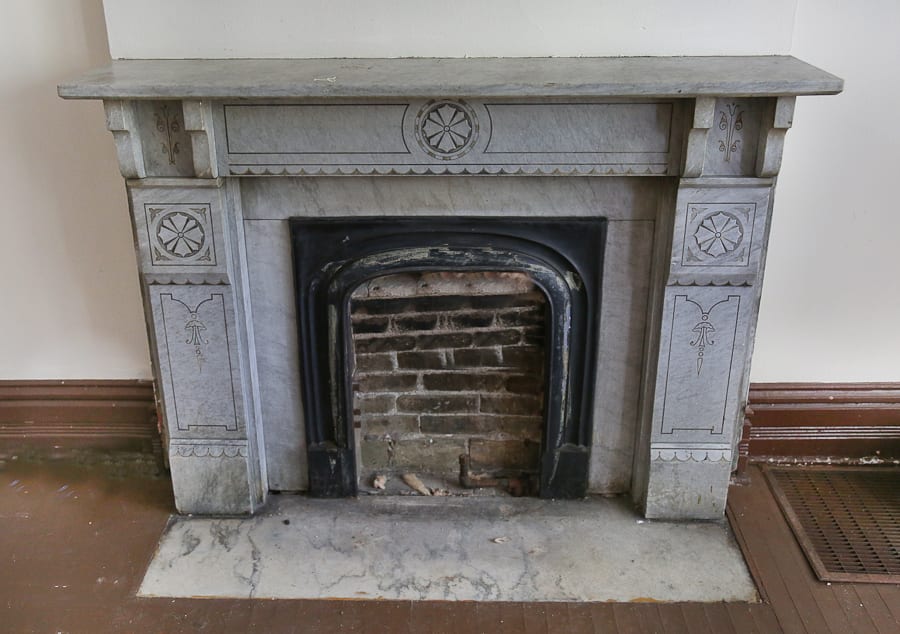
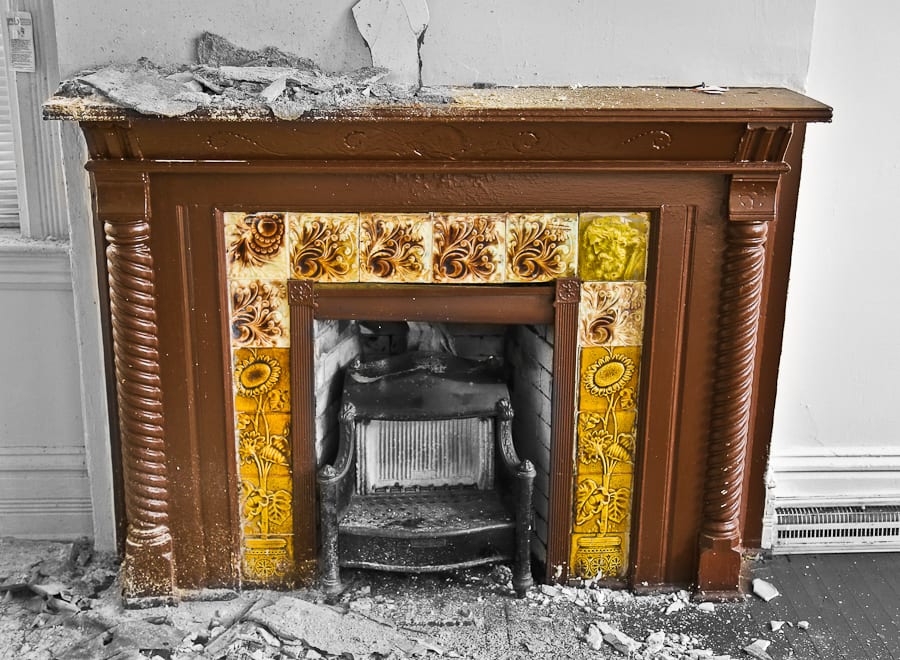
i know i say this often, and will no doubt say it again, but with so many concurrent salvages, plus commitment to documenting the death of buildings i don't have access to, i have to rely heavily on the images taken onsite to convey information later. the camera is a second memory, allowing me to bring back the scene in great detail and research more effectively. i generally think it is imperative to merge writing with photography (to make a cohesive narrative), but in busy periods i have also been pleasantly surprised by the power of images alone to quickly share what i'm working on with the public. even lacking full-fledged narratives, compelling documentation can prove words to be unnecessary for conveying my message.
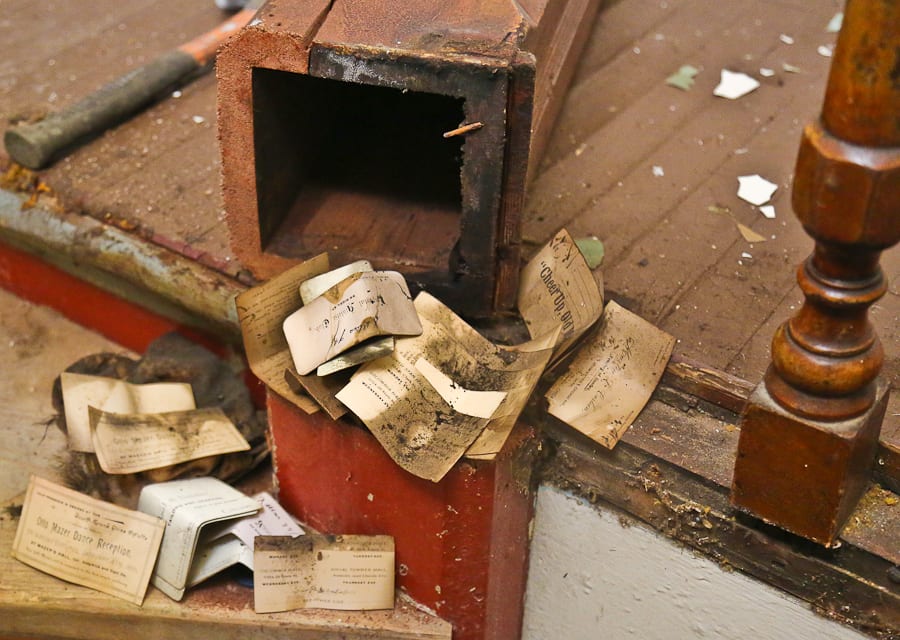
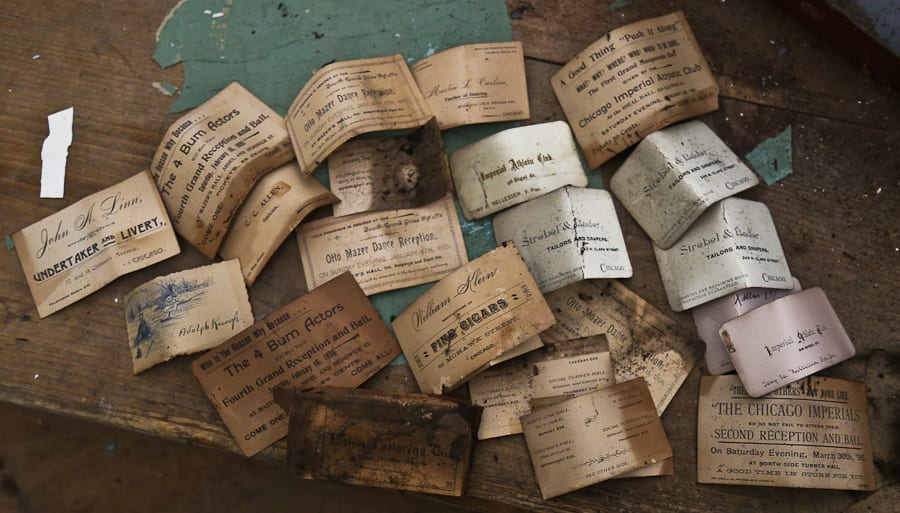
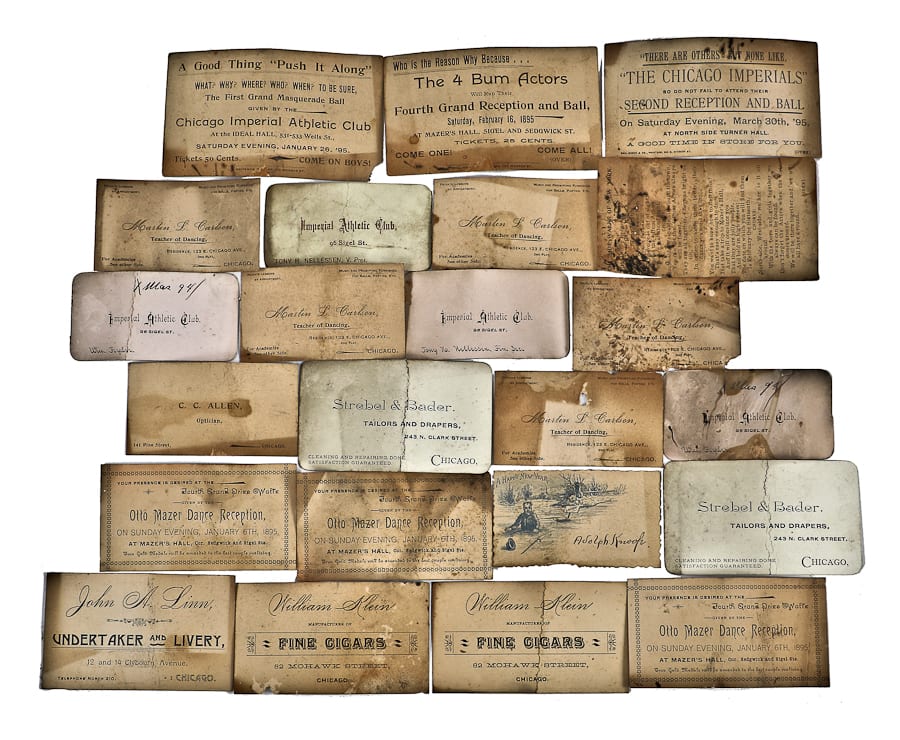
and yet, like the salvage itself, a narrative requires an exploration of process itself. this means detailing important finds (e.g., finding several business cards in the base of a newel post), demystifying the alterations that happened over time, pinpointing fabricators of materials, and so on. all of this requires a great deal of research, and thus time, which is not on my side at the moment. on this particular site, for instance, i discovered that a few pieces of exterior terra cotta ornament contained lightly incised manufacturer markings (i.e., northwestern terra cotta works), which is something i have never seen before, and when time permits i would like to find out when they were marking their terra cotta.
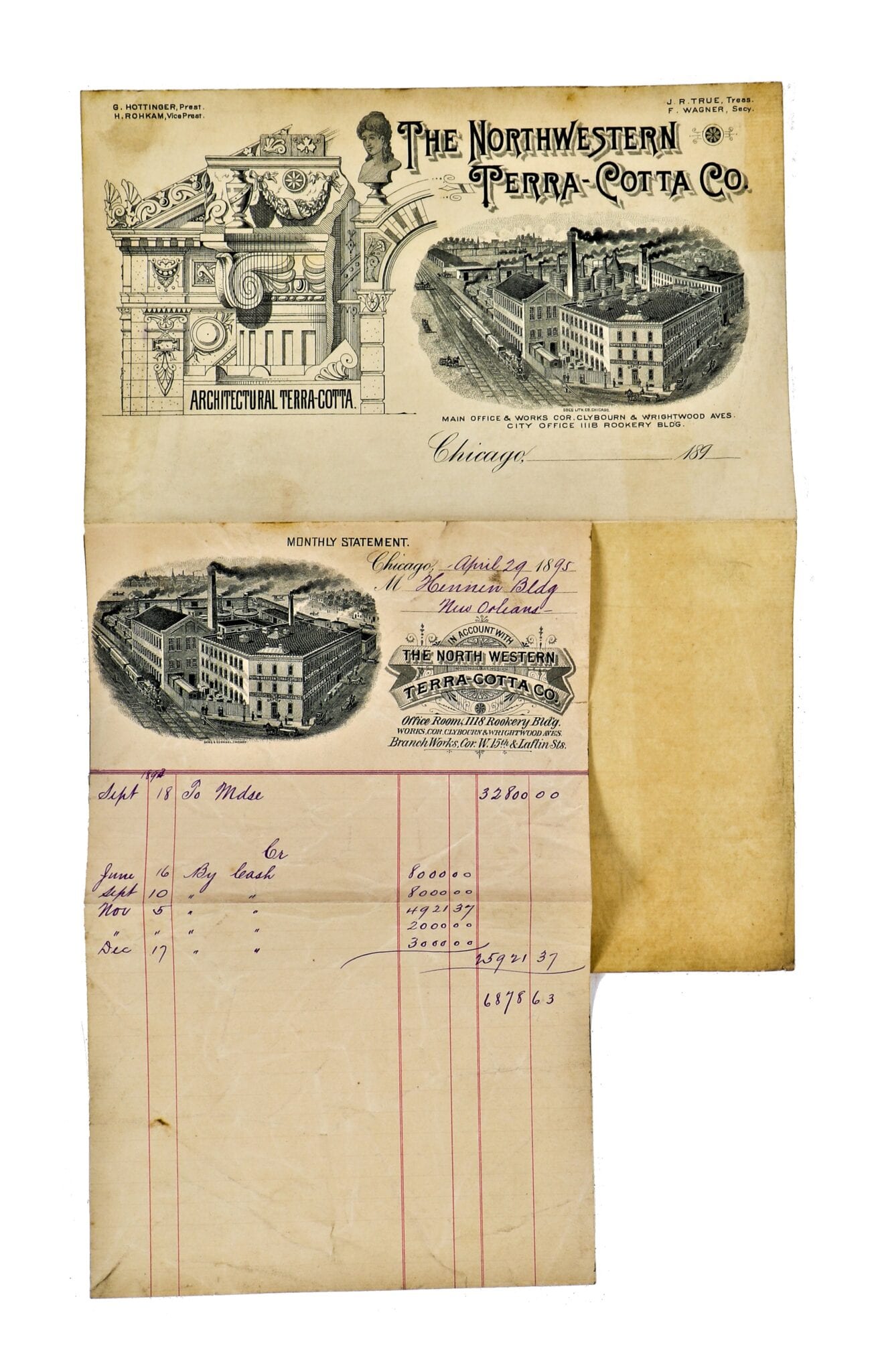
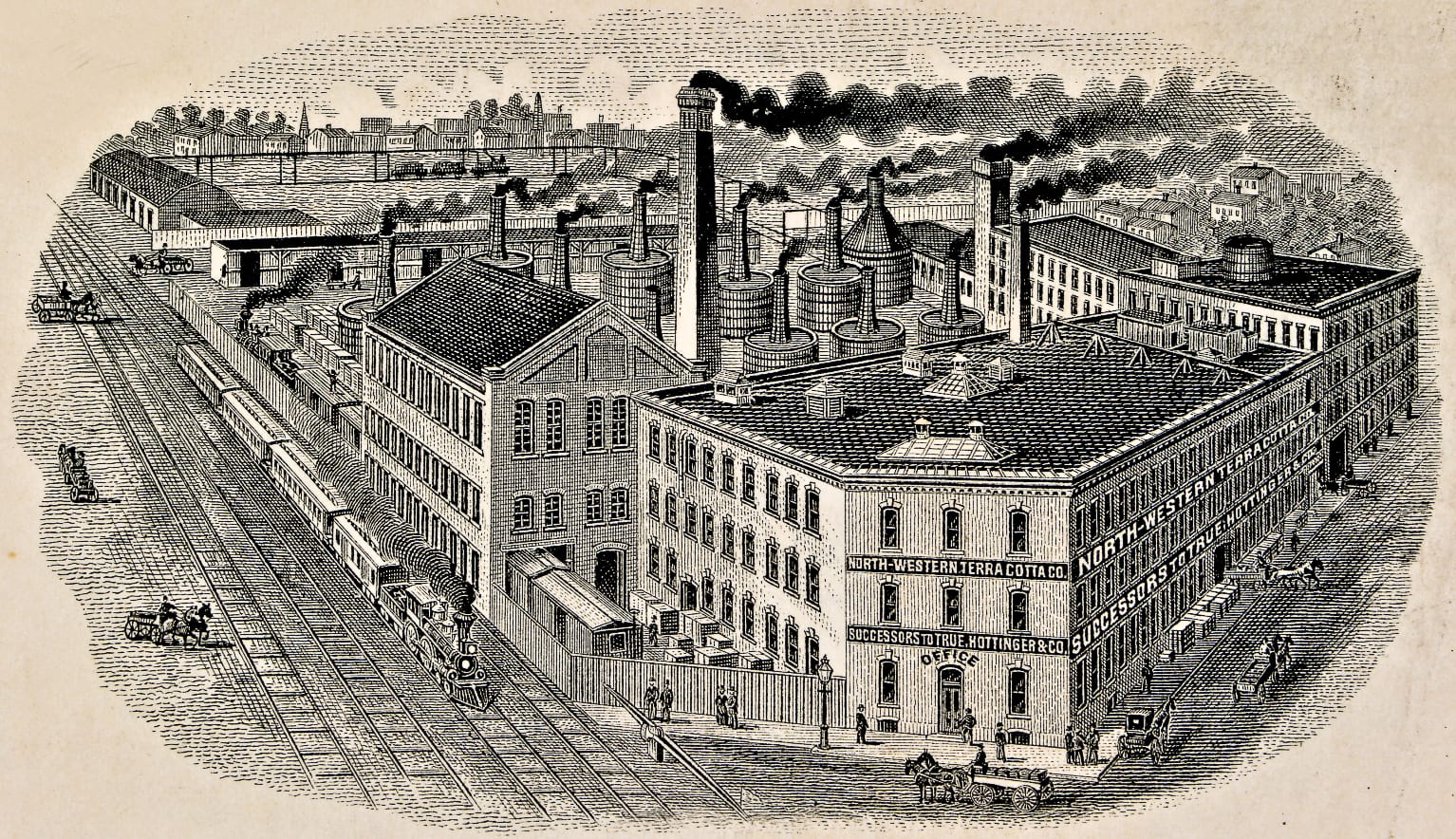
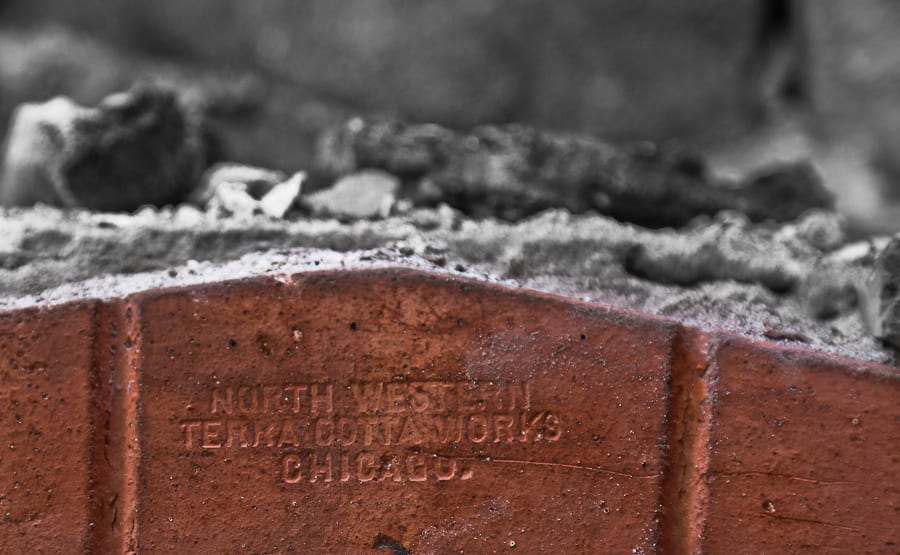
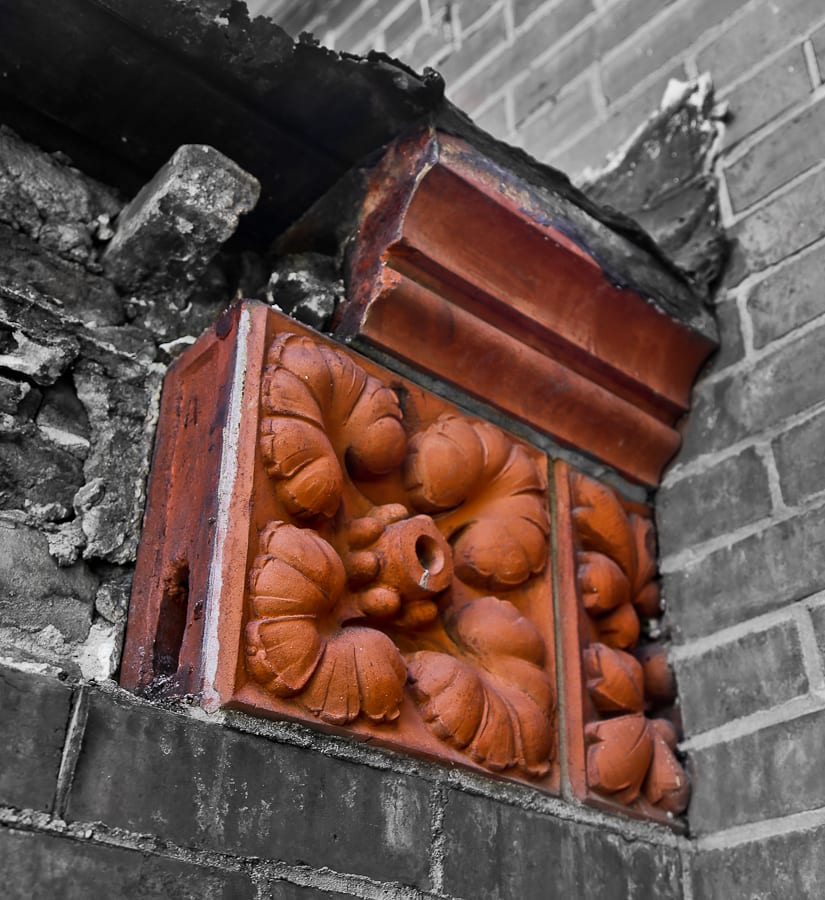
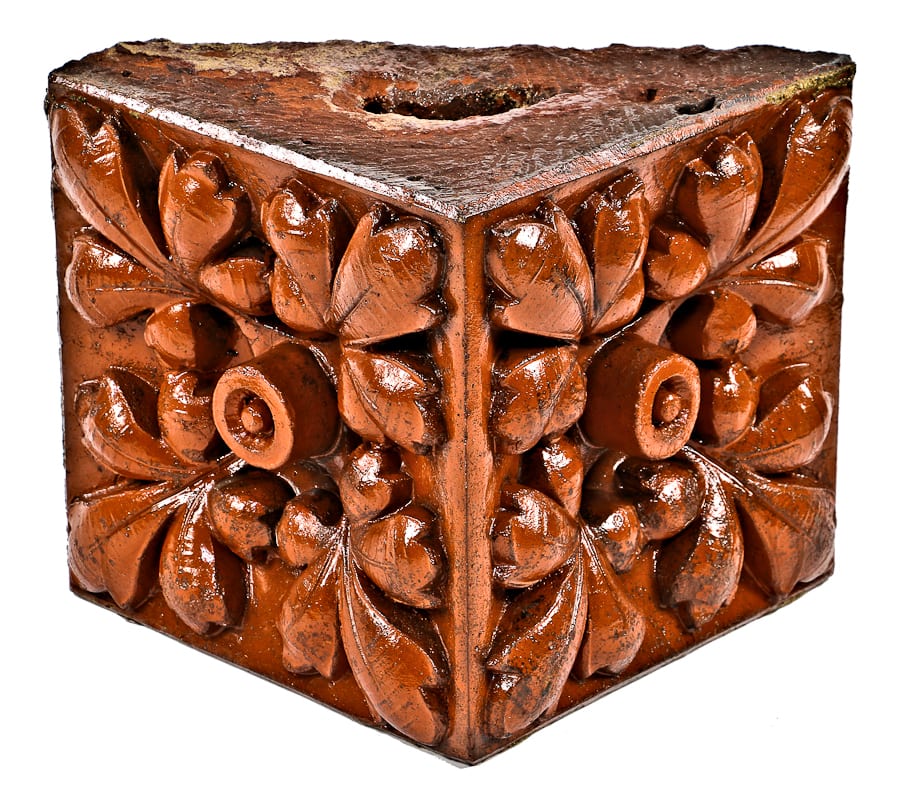
if done within a small time frame, this minuscule detail could determine a date at which the terra cotta was added. so the levels of complexity are seemingly unending, but i feel it's my duty to address as much of it as possible, to provide you the reader with empirical information and a story that does justice to the historic importance of the structure undergoing demolition.
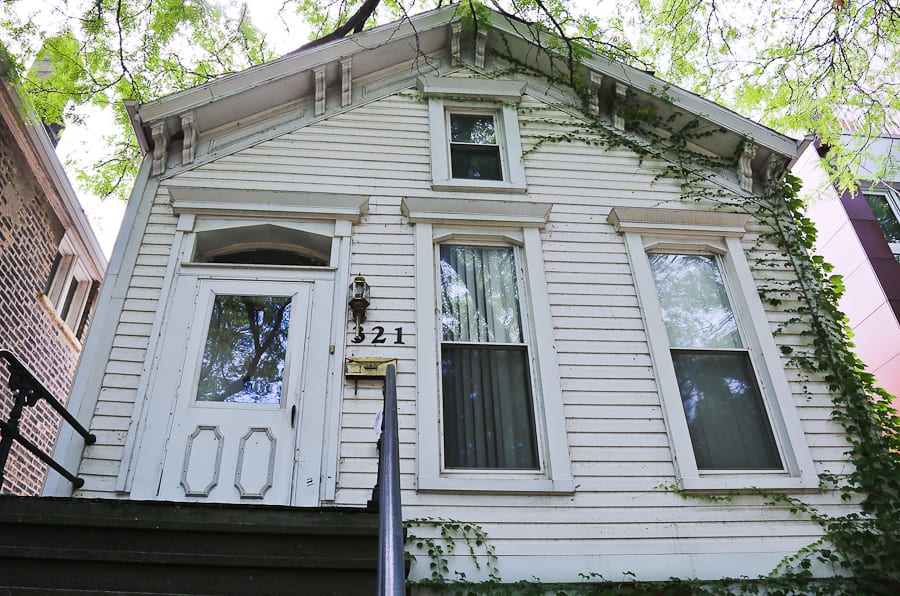
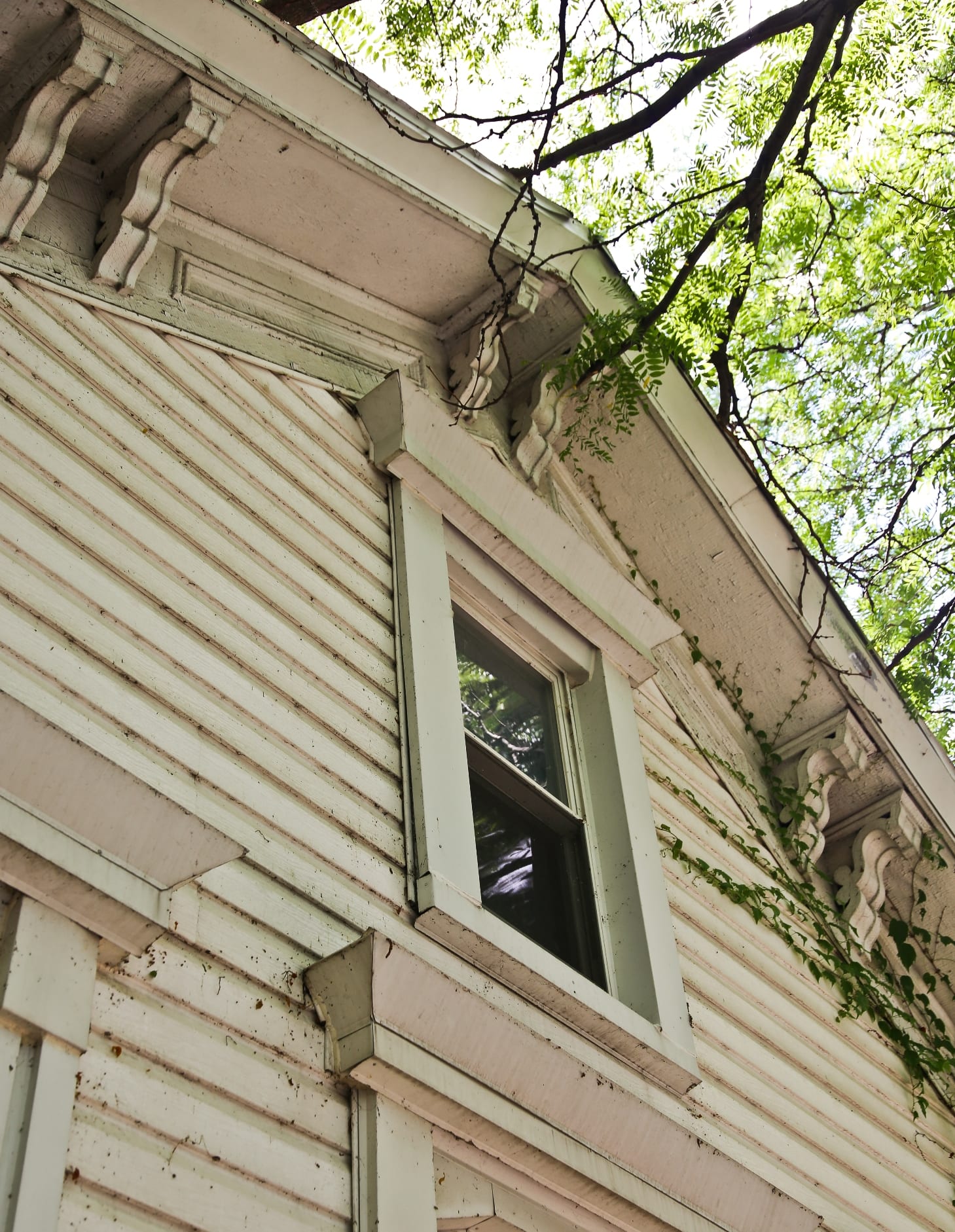
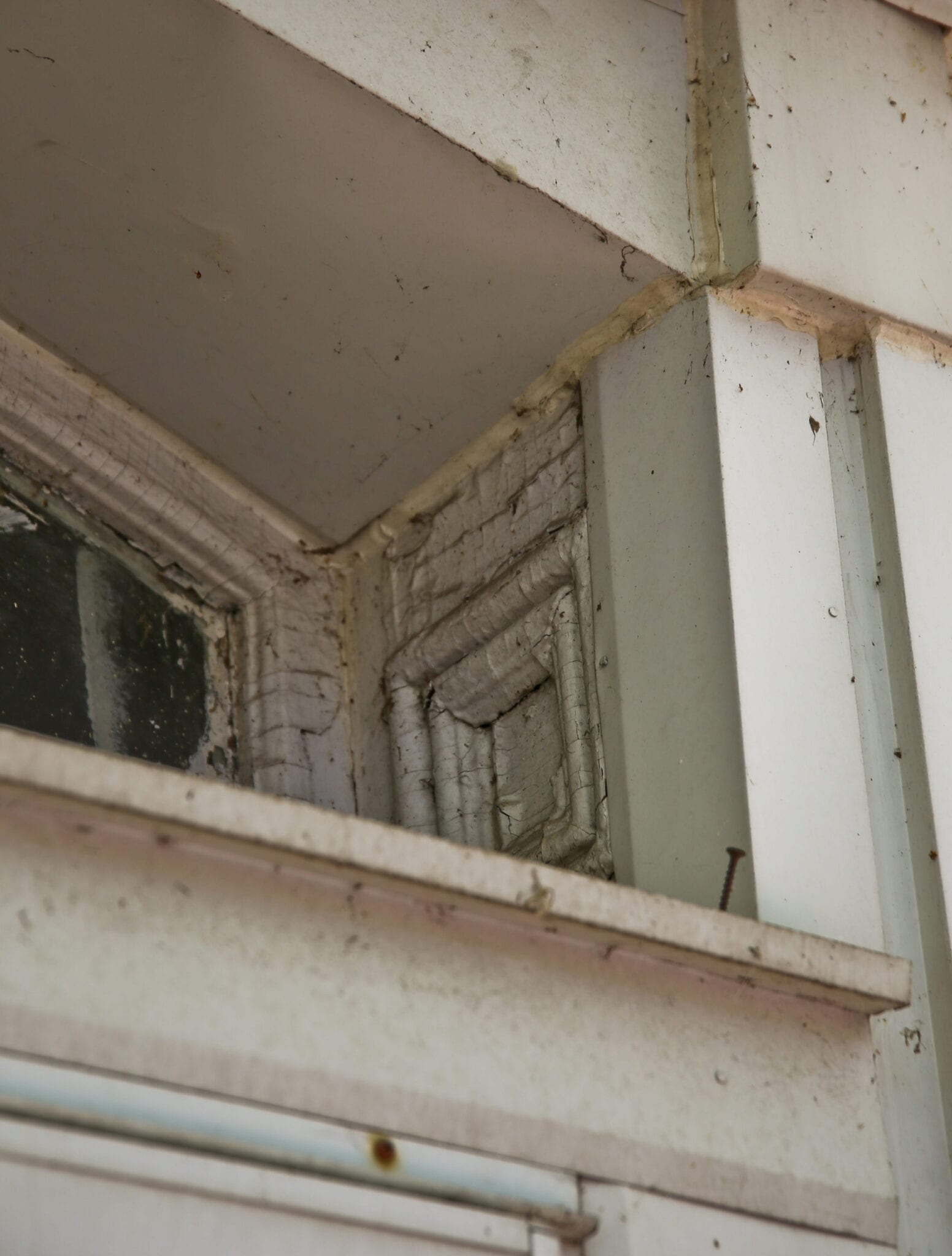
to digress, this jobsite was filled to the brim with information to be shared and could not be put forth in only an image gallery. in fact the day itself very much revolved around interactions with a neighbor, whose flippant attitude toward preservation helped play out much of the tension between salvage and new development.
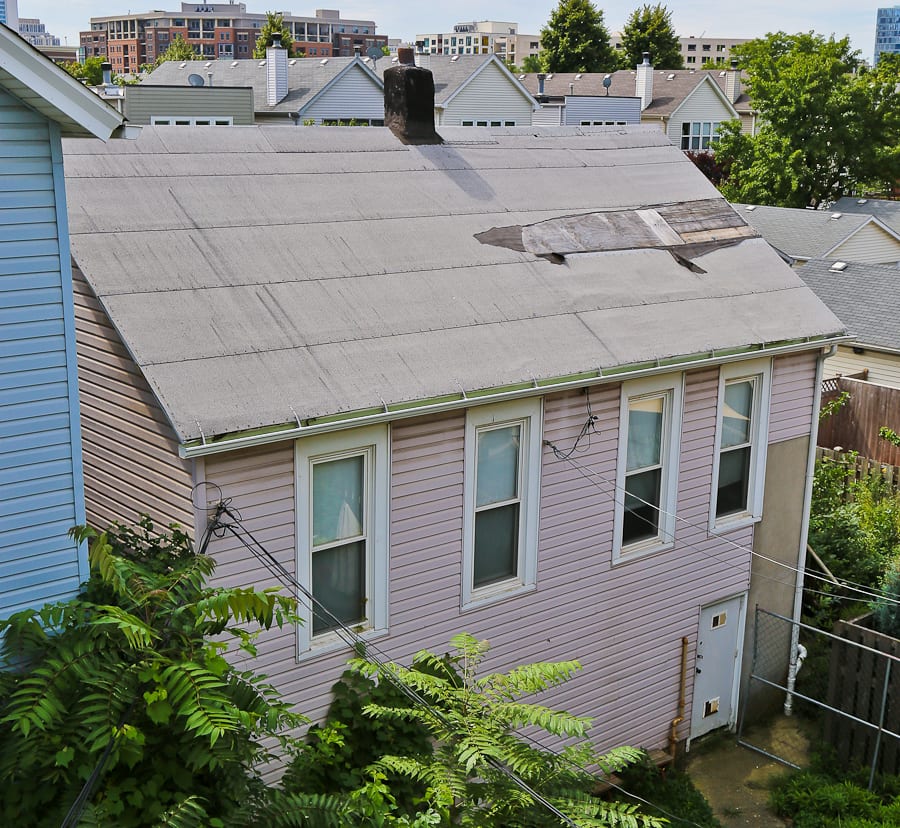
seven hours in and i was standing there with a friend, who would deconstruct the houses before the machine's treads began to rumble. we were caked in dirt and sweat. my body throbbed from inflammation everywhere, including a twisted ankle that likely would have been broken if i weren't wearing my steel toe boots.
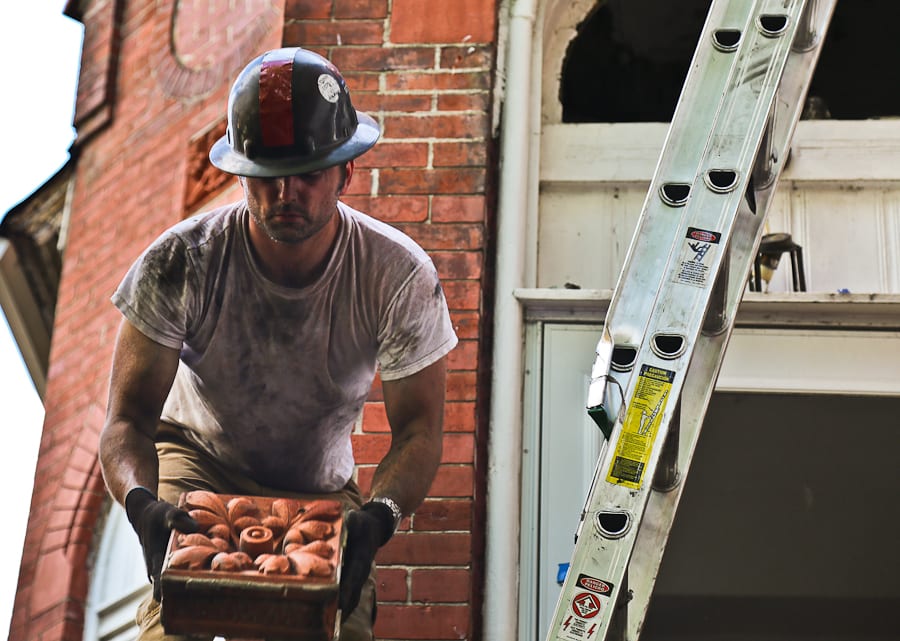
a shiny mercedes rolled into the driveway next door and within minutes the well-dressed man looked over his property and then made his way over to us. he asked when the houses - the only two from the 19th century left standing on block - would be disposed of. "shortly," i said in a somber tone. you could see a huge wave of relief crawl across his face. he then went on about how delighted he was to see them go away...and i tuned out. he boasted about smashing a 19th century residence for his giant soulless edifice, but said that he kept the ornament stone to use later - "as something cool." at this, my ears perked up. perhaps dropping this into the conversation was his way to slither into our world, after realizing what we were doing. something didn't sit right - he'll take pride in saving some ornament, but 10 years later, will he describe them as a nuisance he isn't sure what to do with? perhaps they will still simply be "something cool," down the line.
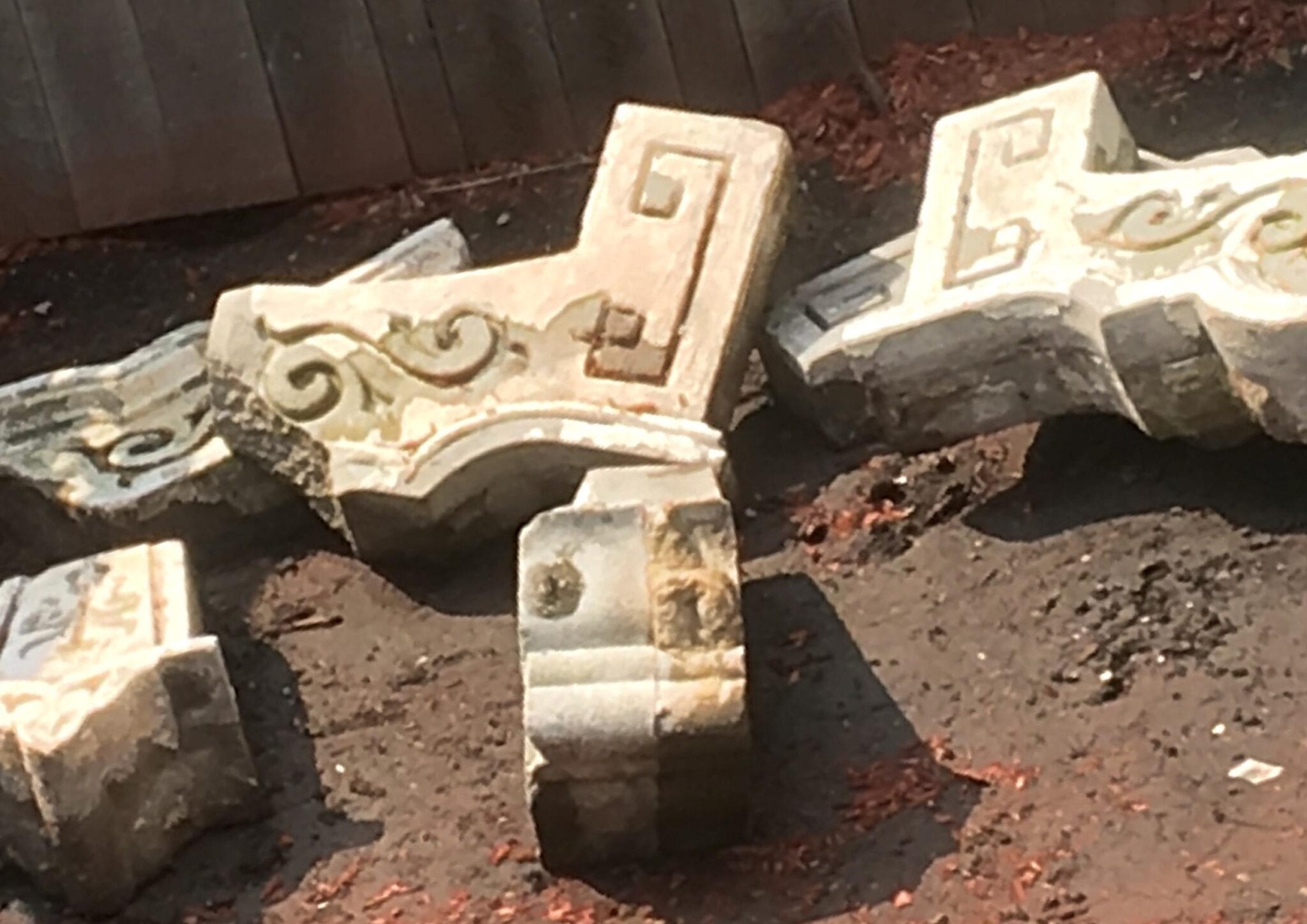
the following day, bleeding into the weekend, i returned to show nancy the four houses - including one with a porch where we could oversee the fragments being kept in the man's backyard. they were stunning! three-part keystones with remarkable incised ornament along the sectional hoods and key itself. i wanted them. they screamed post-fire. normally i shy far away from mingling in other people's affairs, but these were just so amazing. when i went next door i met the man's daughter, who was kind enough to call her father and ask if the stones were for sale. minutes later, while i was back on the job she came over and said they were not for sale. fair enough, but i couldn't resist. i pressed a little. i offered 500 dollars for just one. for my collection of course. she said the fact that i offered so much proved to both of them that the ornaments were very important. to my mind - true, but still relative. they are indicative of the ornament used in post-fire residential cottages, but other than that, the narrative grows thin. i asked her why they were so important - questioning whether she knew what they were (tongue in cheek) with a visible smile. she grew a little agitated and belted, "headstones." nancy and i laughed a little. i asked if they belonged in a graveyard. clearly she had little idea what they were, or what they meant.

people can do whatever the hell they want... it's just sad that ornament which might be appreciated in a historical context have been sitting in a backyard for ten years, scattered aimlessly around nothing. what's the difference between that and a landfill? the house of course, built on a double lot, is the most hideous creature to rise from the ground. so at the very least, the fragments live on, giving a silent middle finger to the monstrosity that replaced the structure they once adorned.
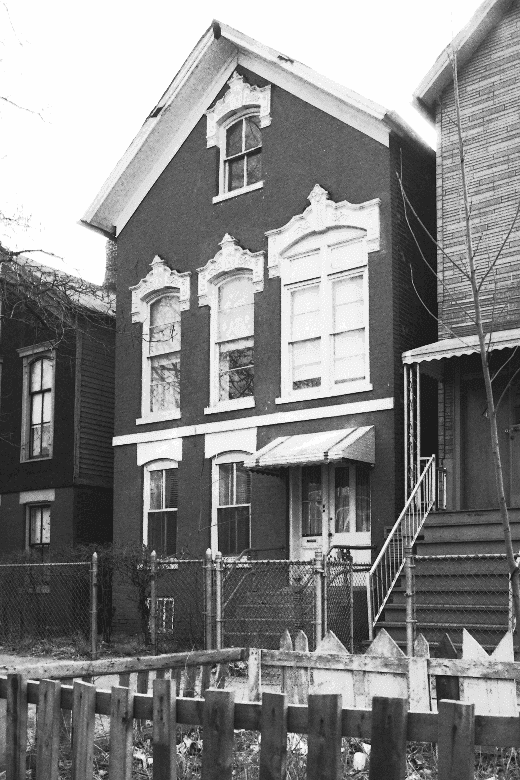
photo courtesy of jeremi bryant.
getting back to the store, but have to push on, shooting the terra cotta!
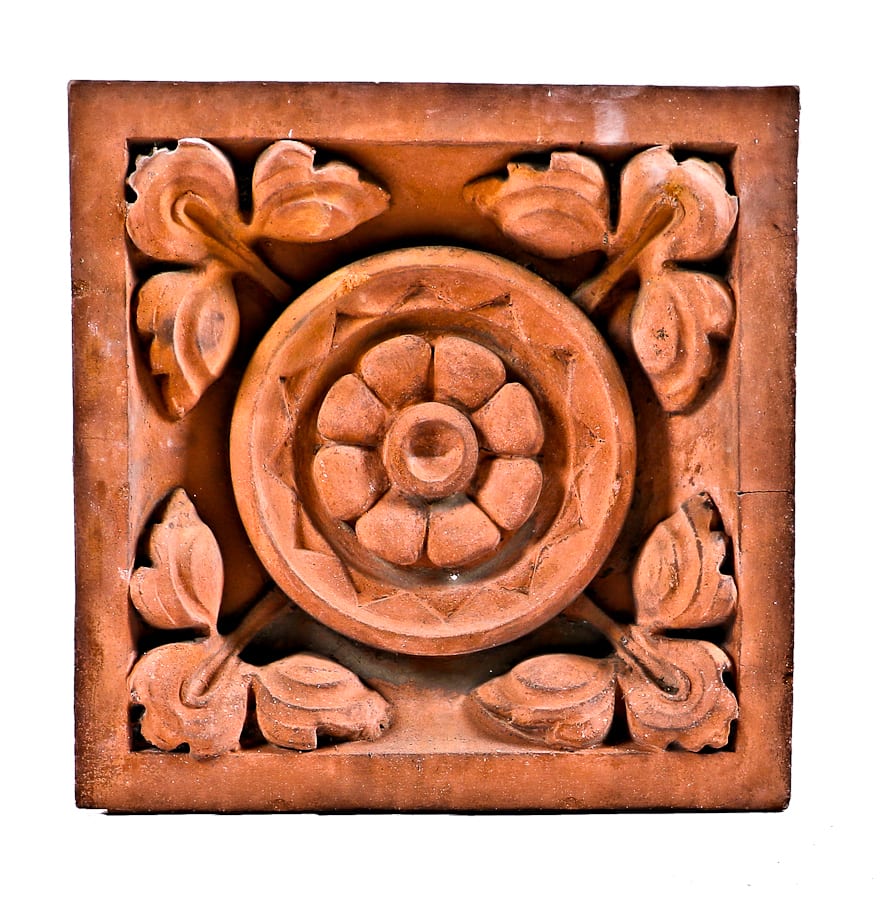
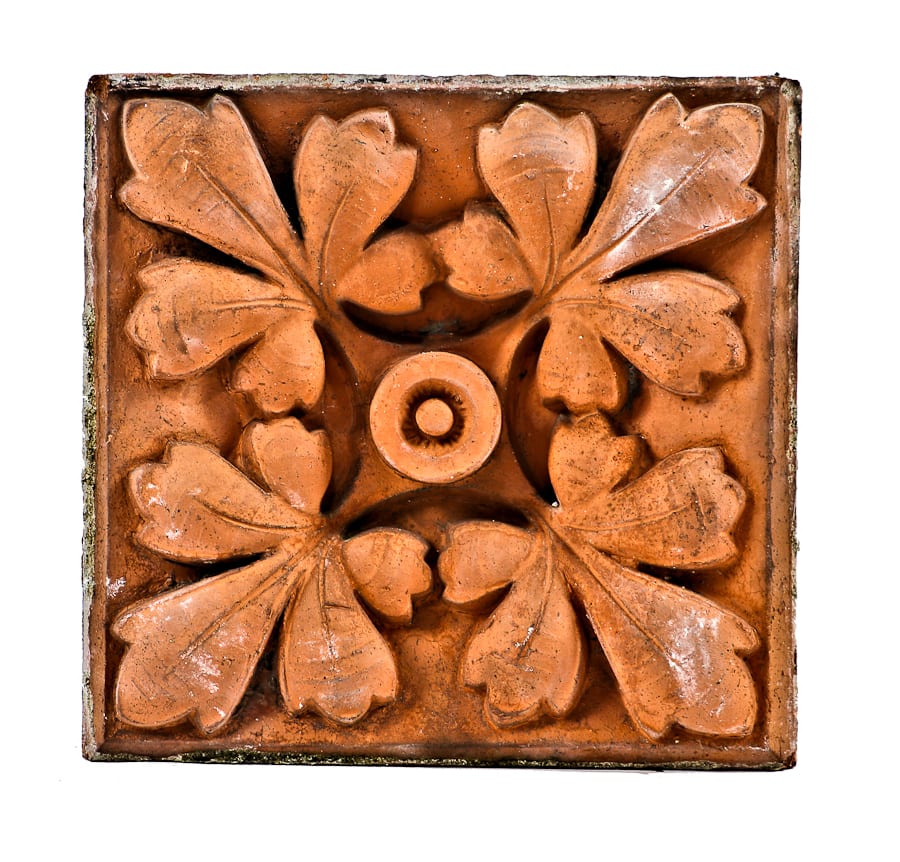
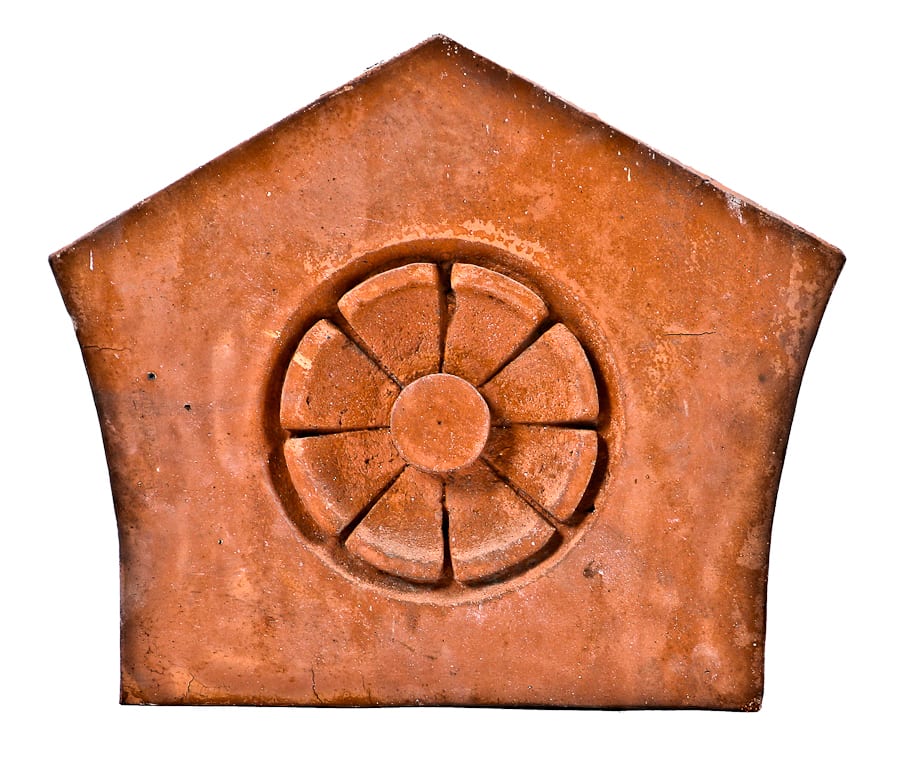
This entry was posted in , Miscellaneous, Salvages, Bldg. 51, New Products, Events & Announcements, New Acquisitions, Featured Posts & Bldg. 51 Feed on September 7 2016 by Eric
WORDLWIDE SHIPPING
If required, please contact an Urban Remains sales associate.
NEW PRODUCTS DAILY
Check back daily as we are constantly adding new products.
PREMIUM SUPPORT
We're here to help answer any question. Contact us anytime!
SALES & PROMOTIONS
Join our newsletter to get the latest information
























